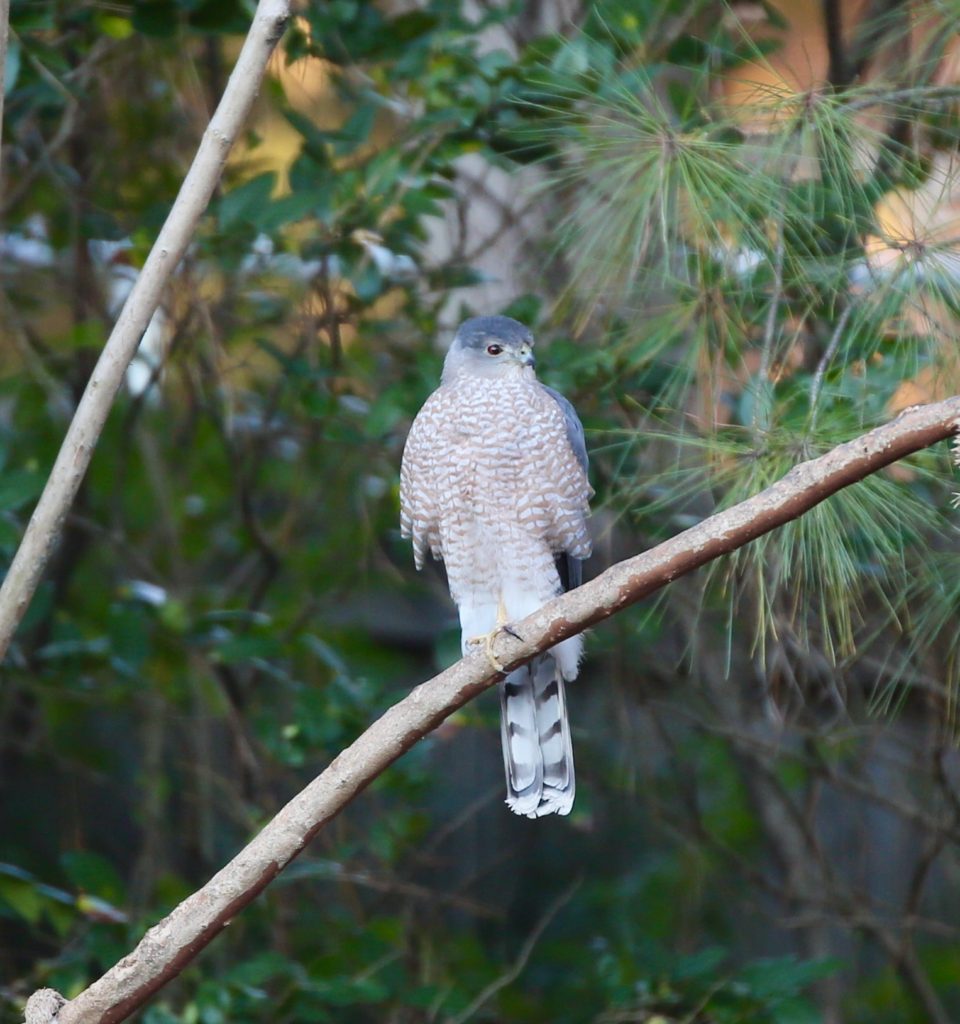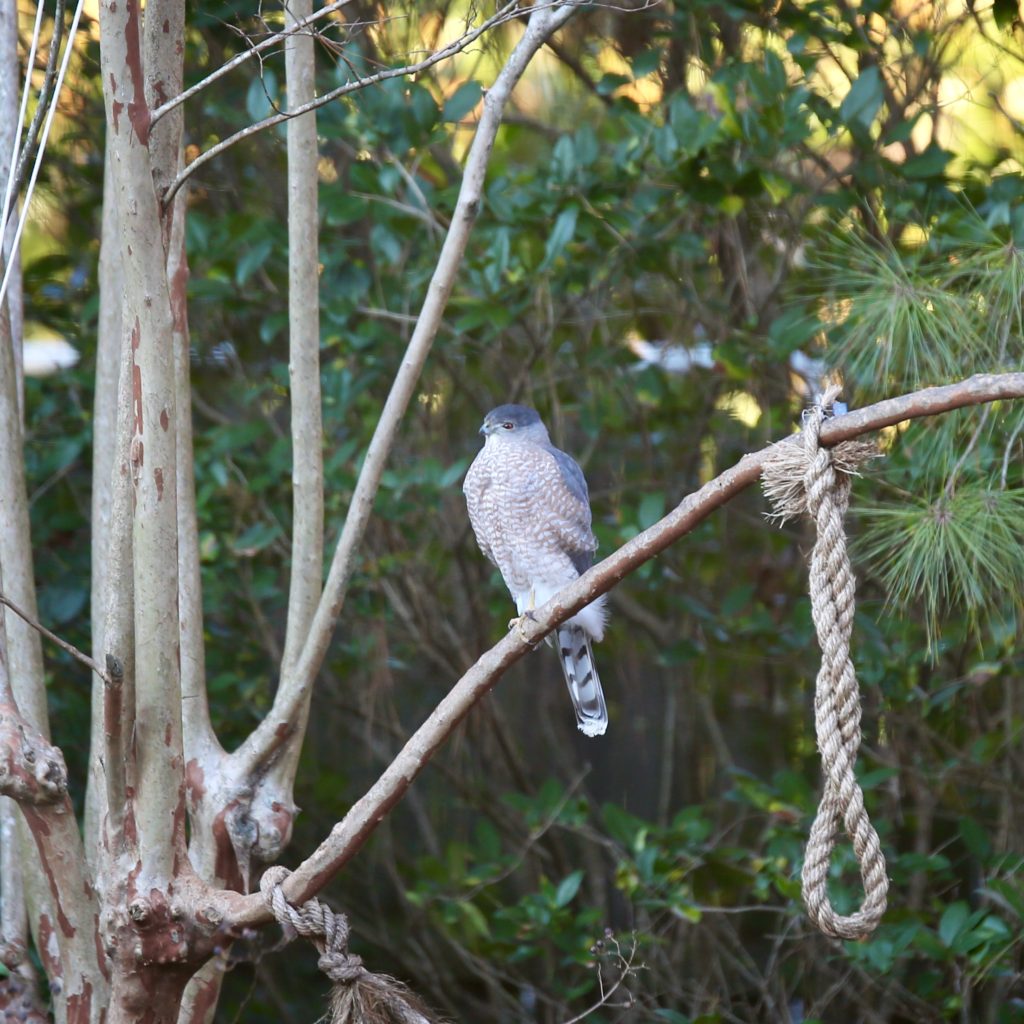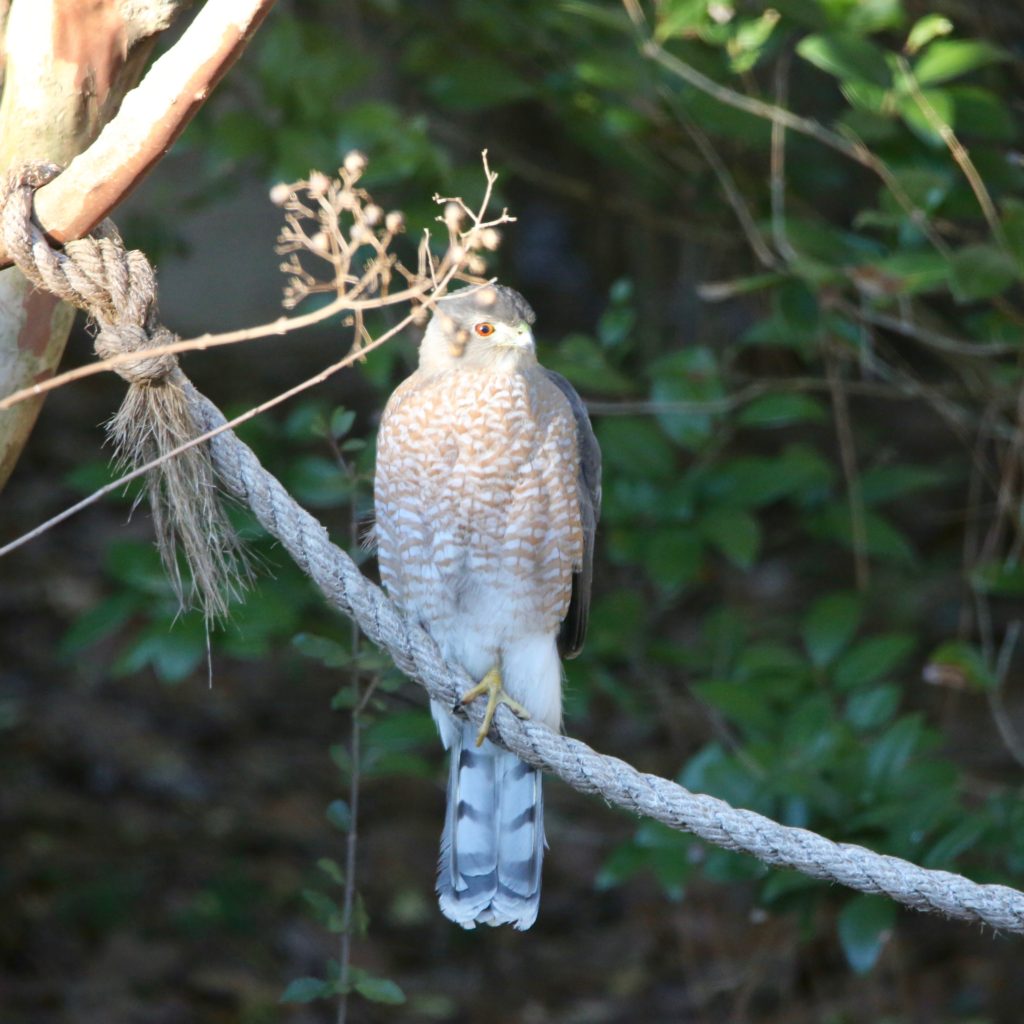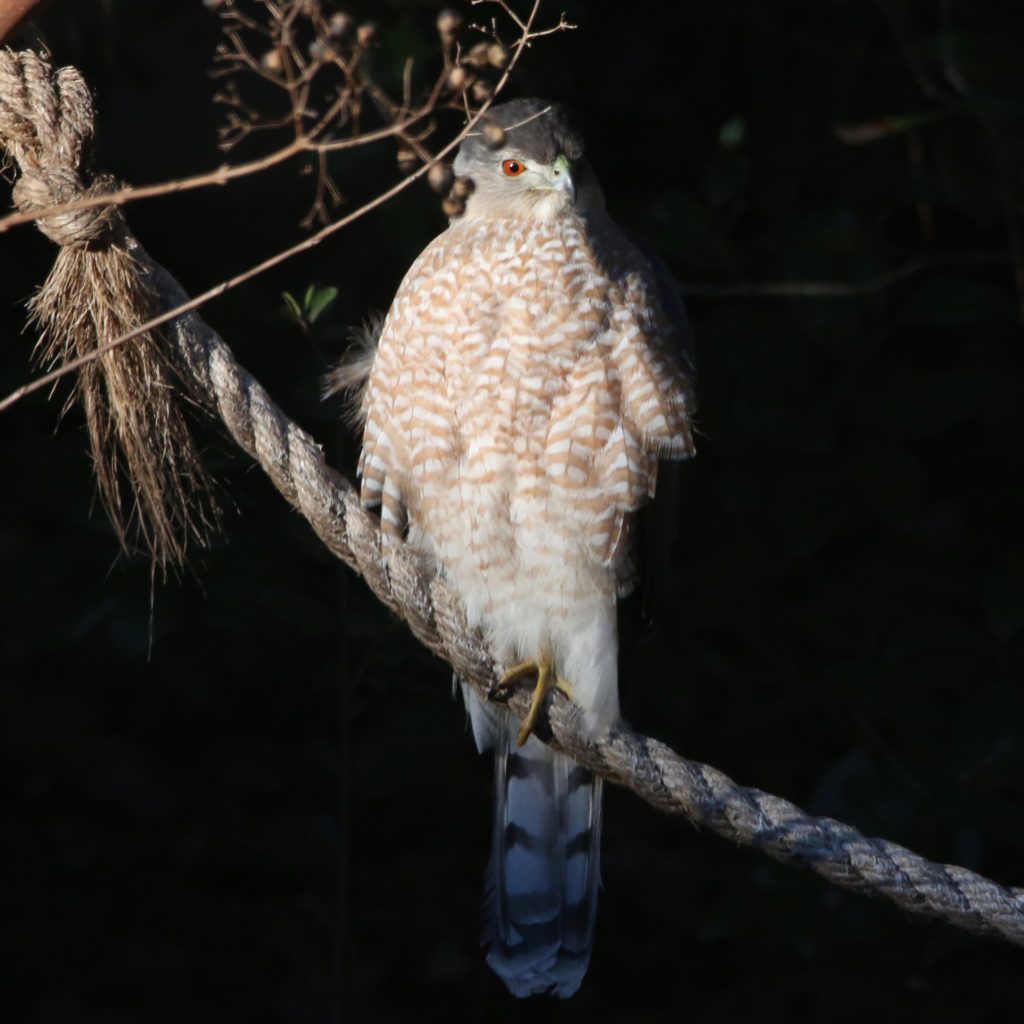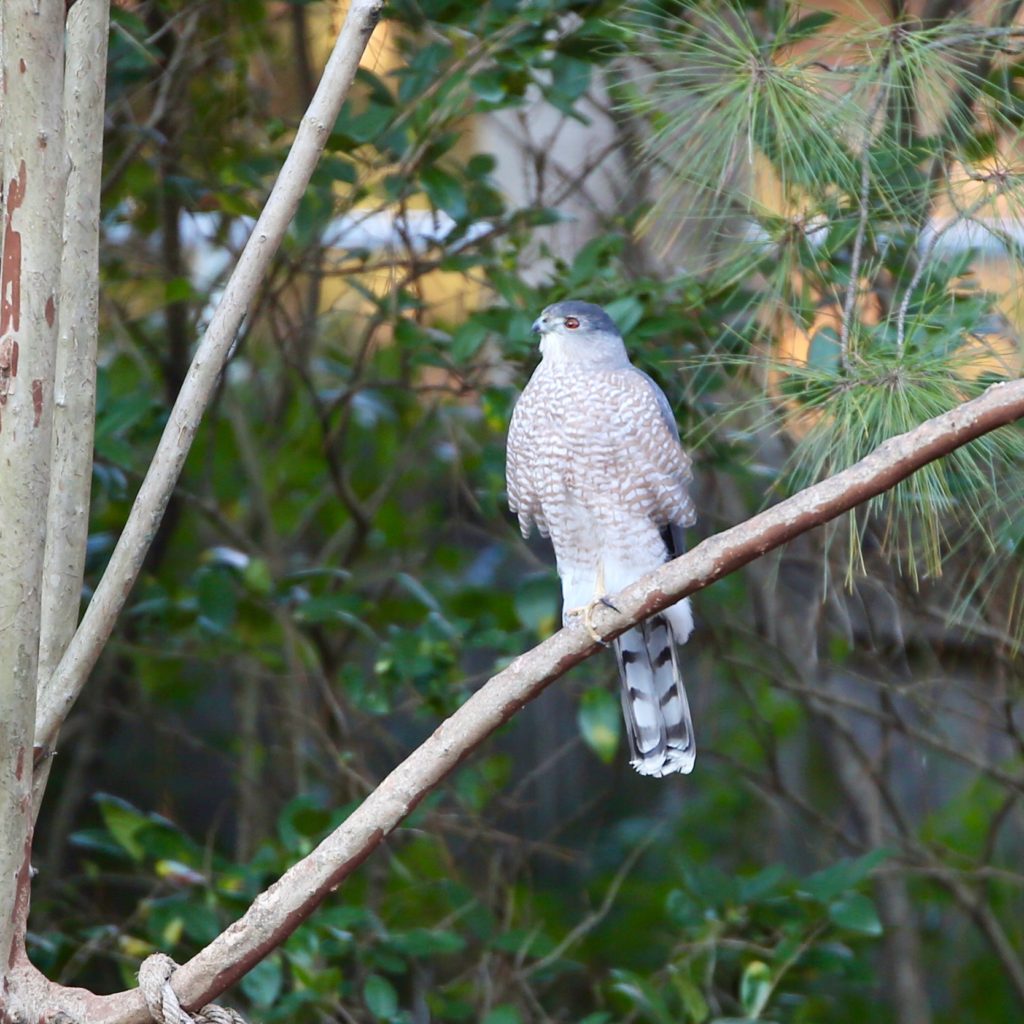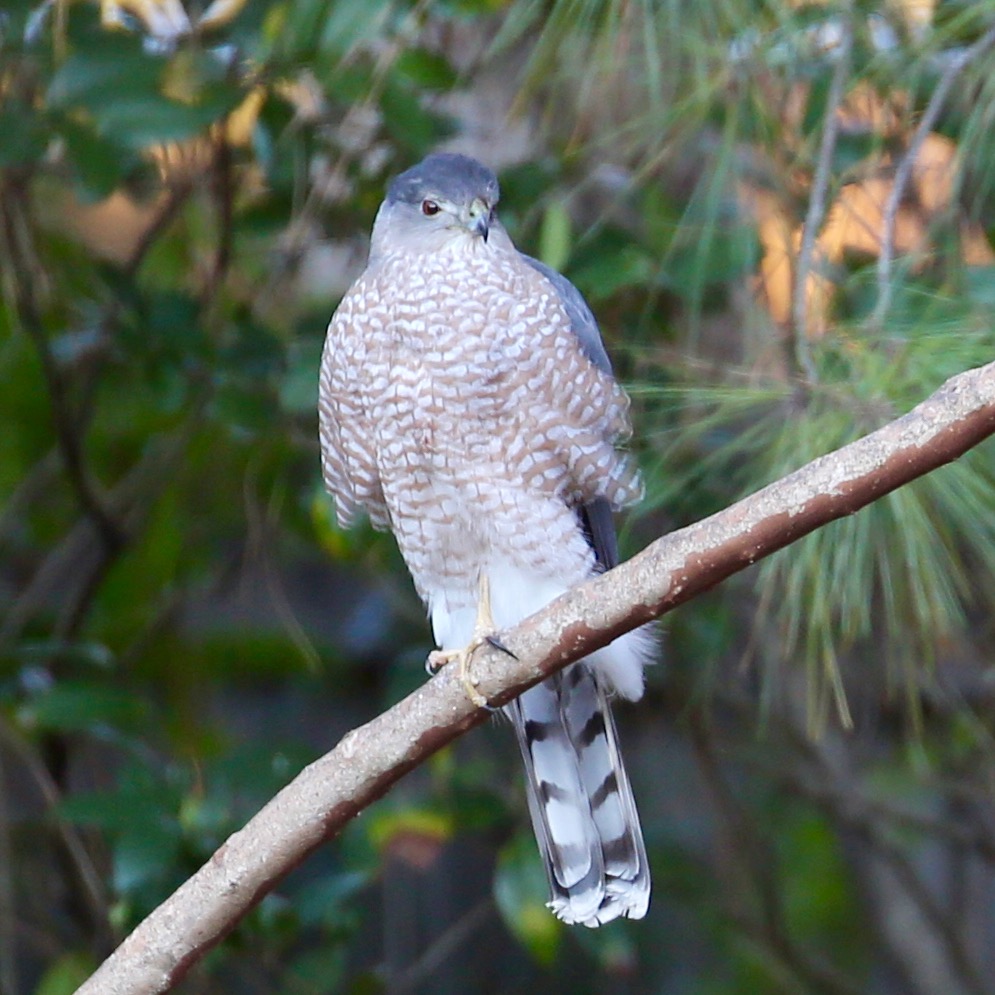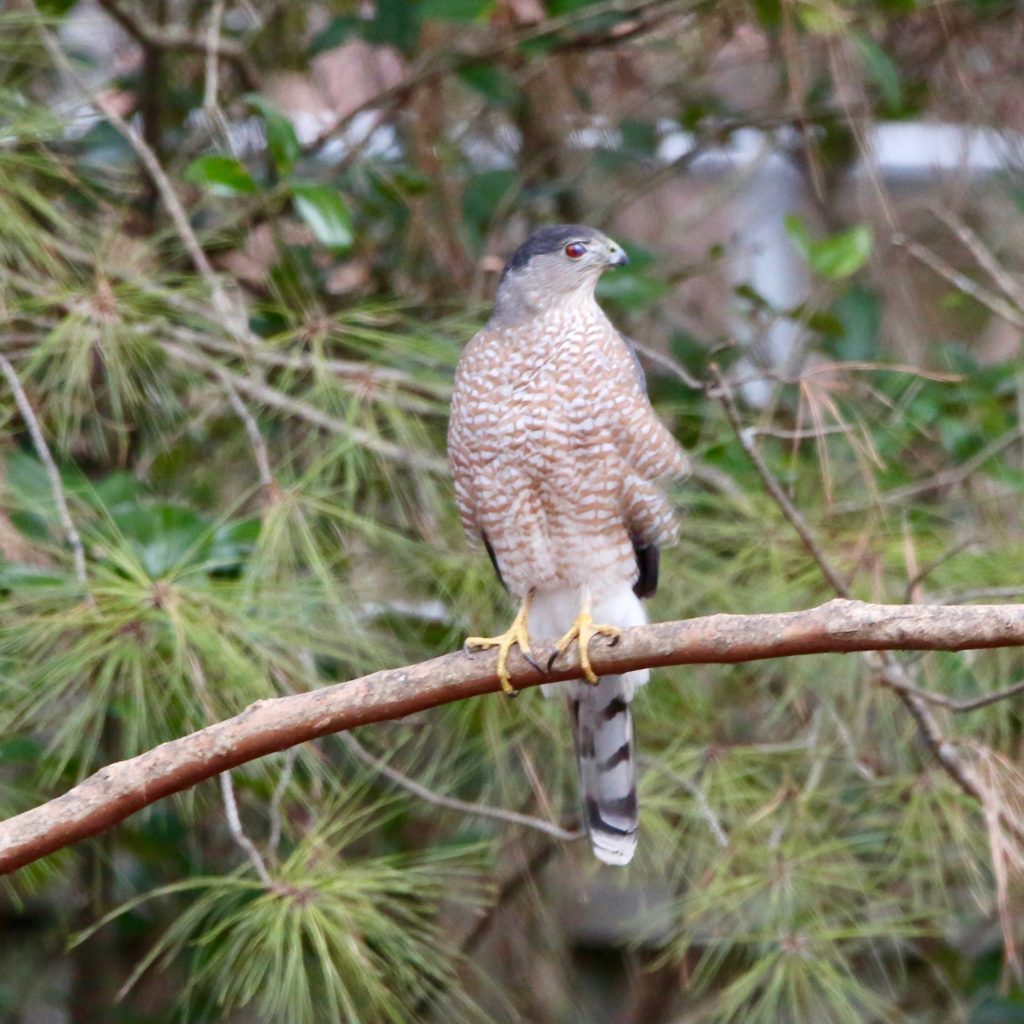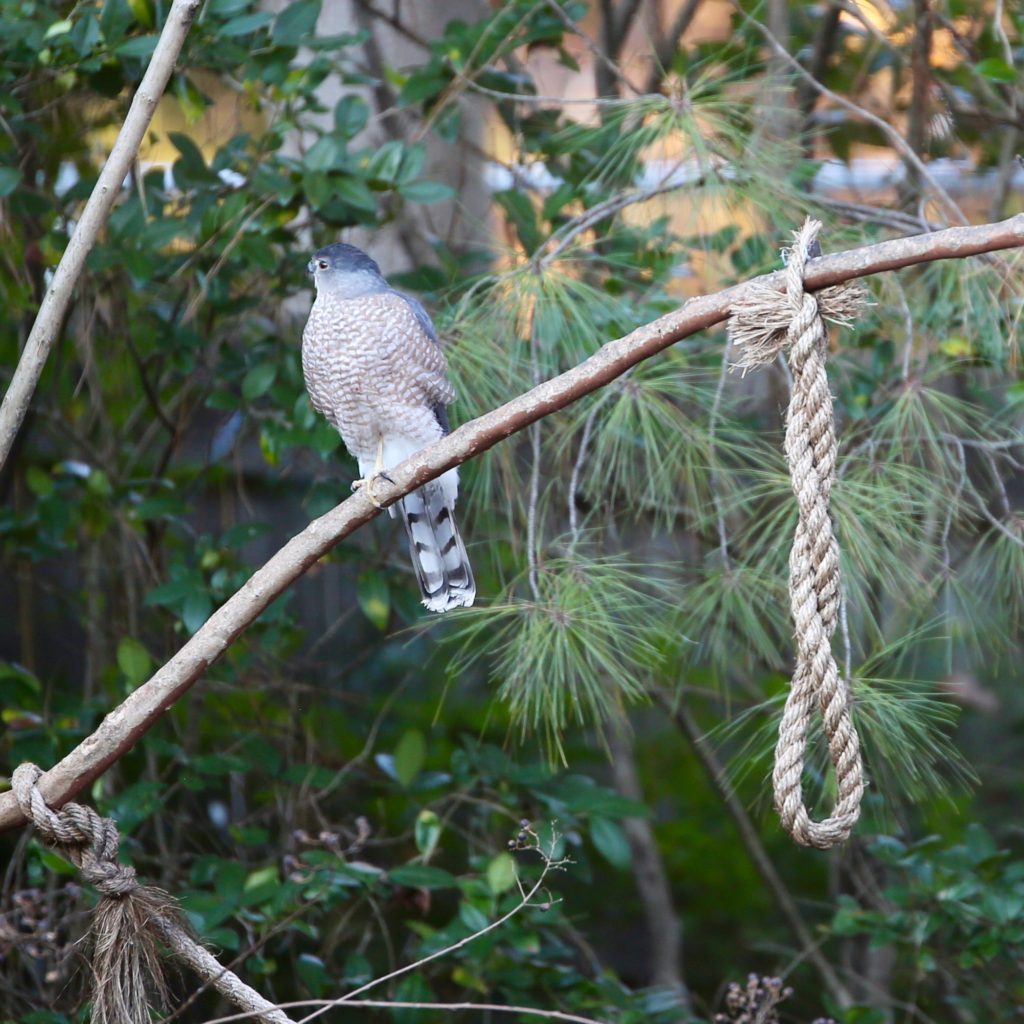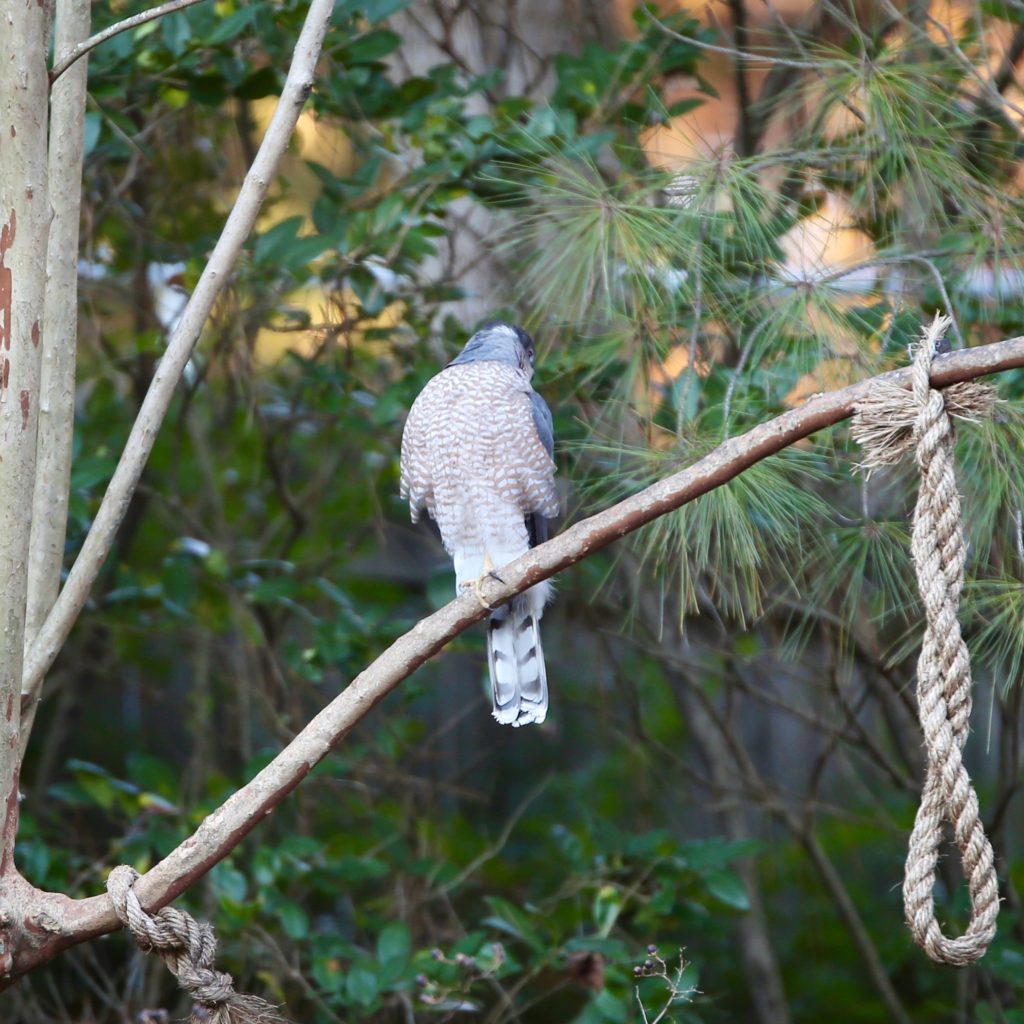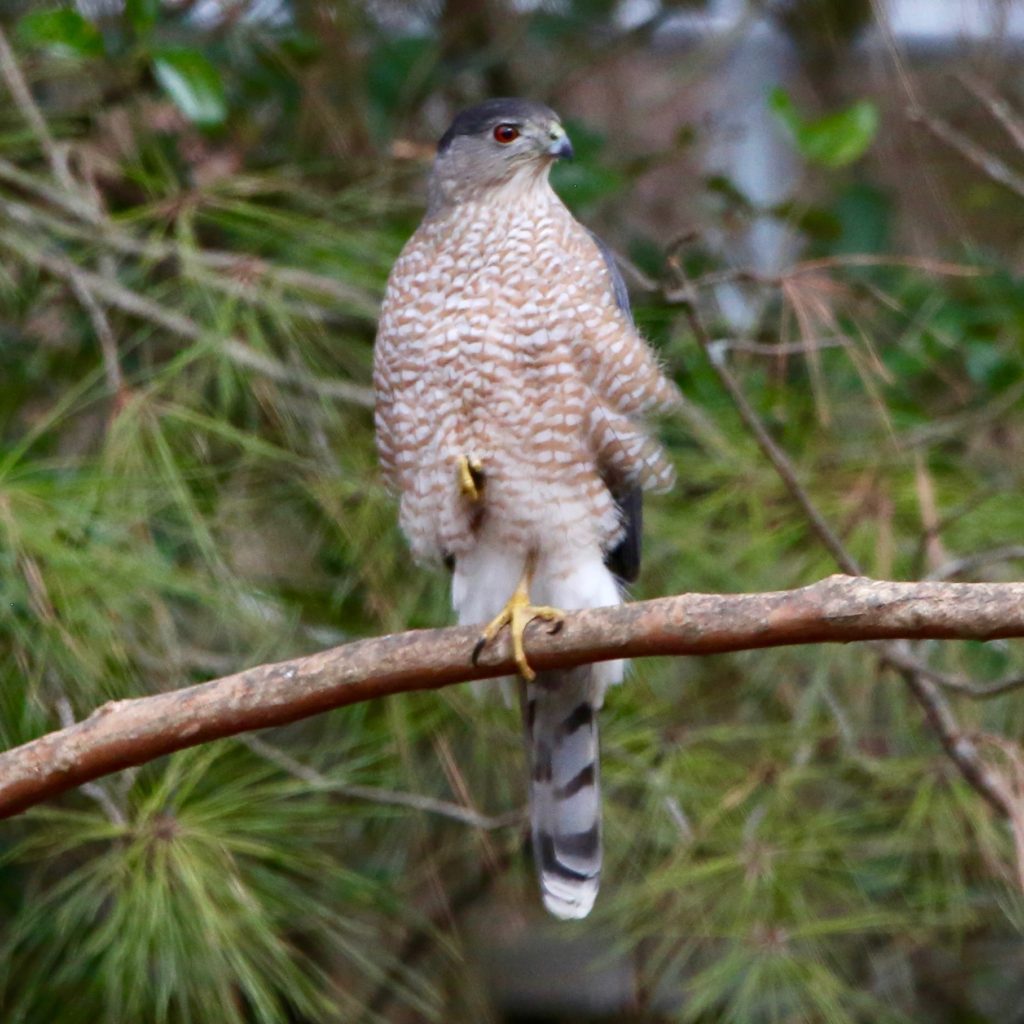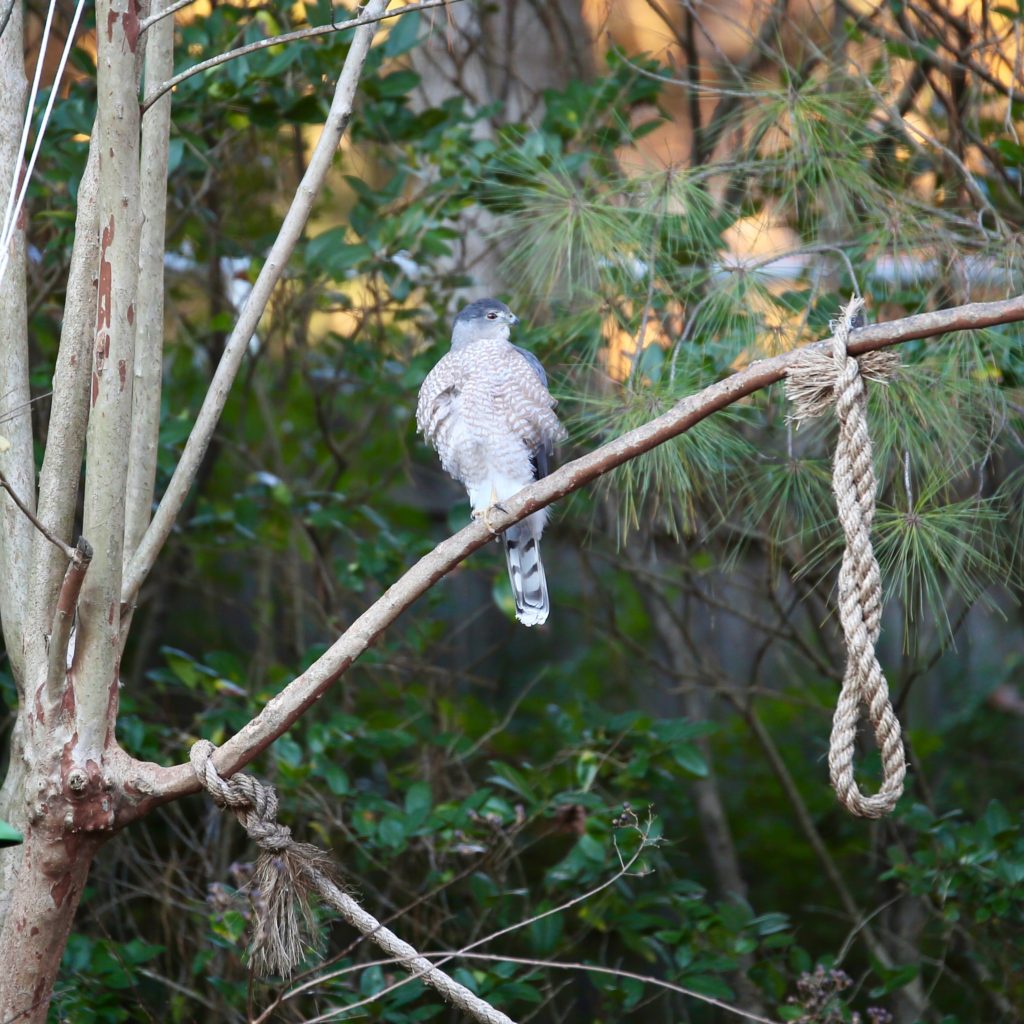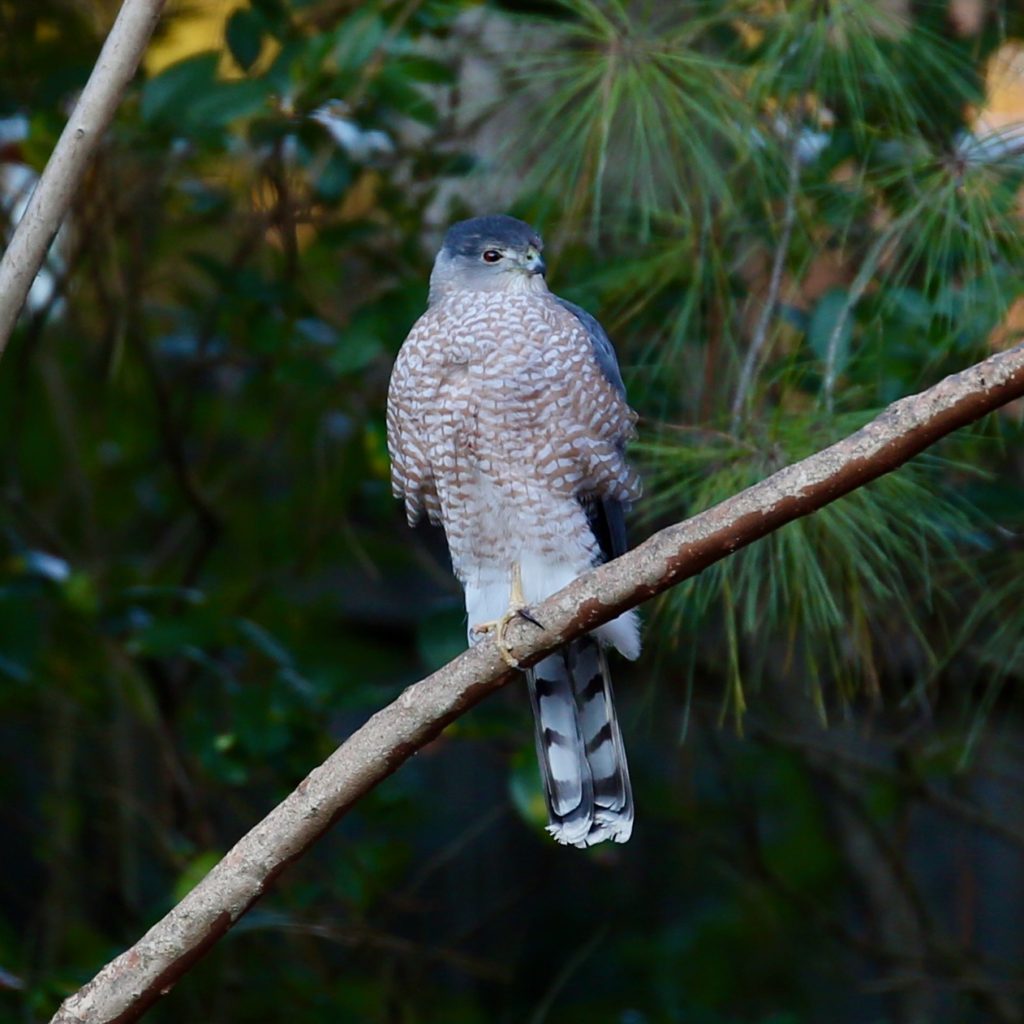
Cooper’s Hawk
A Cooper’s Hawk is a fun bird to see while bird watching. Below are some tips to help you identify Cooper’s Hawks. We have also put together a list of fun Cooper’s Hawk t-shirts, Cooper’s Hawk bird patches, bird houses, bird feeders, binoculars, stickers and other fun bird watching items.
About Cooper’s Hawk
They are one of the most skilled fliers. Cooper’s Hawks are common in woodlands and can be seen pursuing other birds through cluttered tree canopies. It approaches its prey secretly and then pounces on it rapidly with a powerful flight. It is most common in southern Canada where it nests. Some of the distinctive features include:
Cooper’s Hawk Color Pattern
Adult Cooper’s Hawks have blue-gray upperparts and white underparts with orange barring. Their tails have thick dark bands. Juveniles have brown upperparts and brown streaks on the upper breast. Young Cooper’s Hawk eyes are yellow-light orange but with age change to a darker orange and red. Their legs are yellow, which is visible during flight.
Description and Identification
Cooper’s Hawks are a medium-sized hawk and tends to have moderate-length wings, a long, often graduated or even wedge-shaped tail, and long though fairly thick toes and legs. Adults have a well-defined crown of blackish-brown feathers above a paler nape and their tail are blue-gray on top and pale underneath. Juvenile Cooper’s Hawks are generally dark-brown in colour above, while the feathers are not infrequently edged with rufous to cinnamon and have a whitish mottling about the back. The crown on juveniles is brown, whereas, on adults, it’s blackish. Adults have eyes ranging from orange to red; males have average darker eye colour, whereas juveniles have yellow eyes. These birds are fairly variable in size, and there’s no such minimal to no overlap in dimensions between the two sexes.
Cooper’s Hawk Size
They are crown-sized and larger than a Sharp-shinned Hawk. Males tend to be smaller than females.
Size of the males
- Length range: 14.6-15.3 in (37-39 cm)
- Weight:7.8-14.5 oz (220-410 g)
- Wingspan range: 24.4-35.4 in (65-90 cm)
Size of females
- Length range: 14.6-17.7 in (42-45 cm)
- Weight: 11.6-24.0 oz (330-680 g)
- Wingspan: 29.5-35.4 in (75-90 cm)
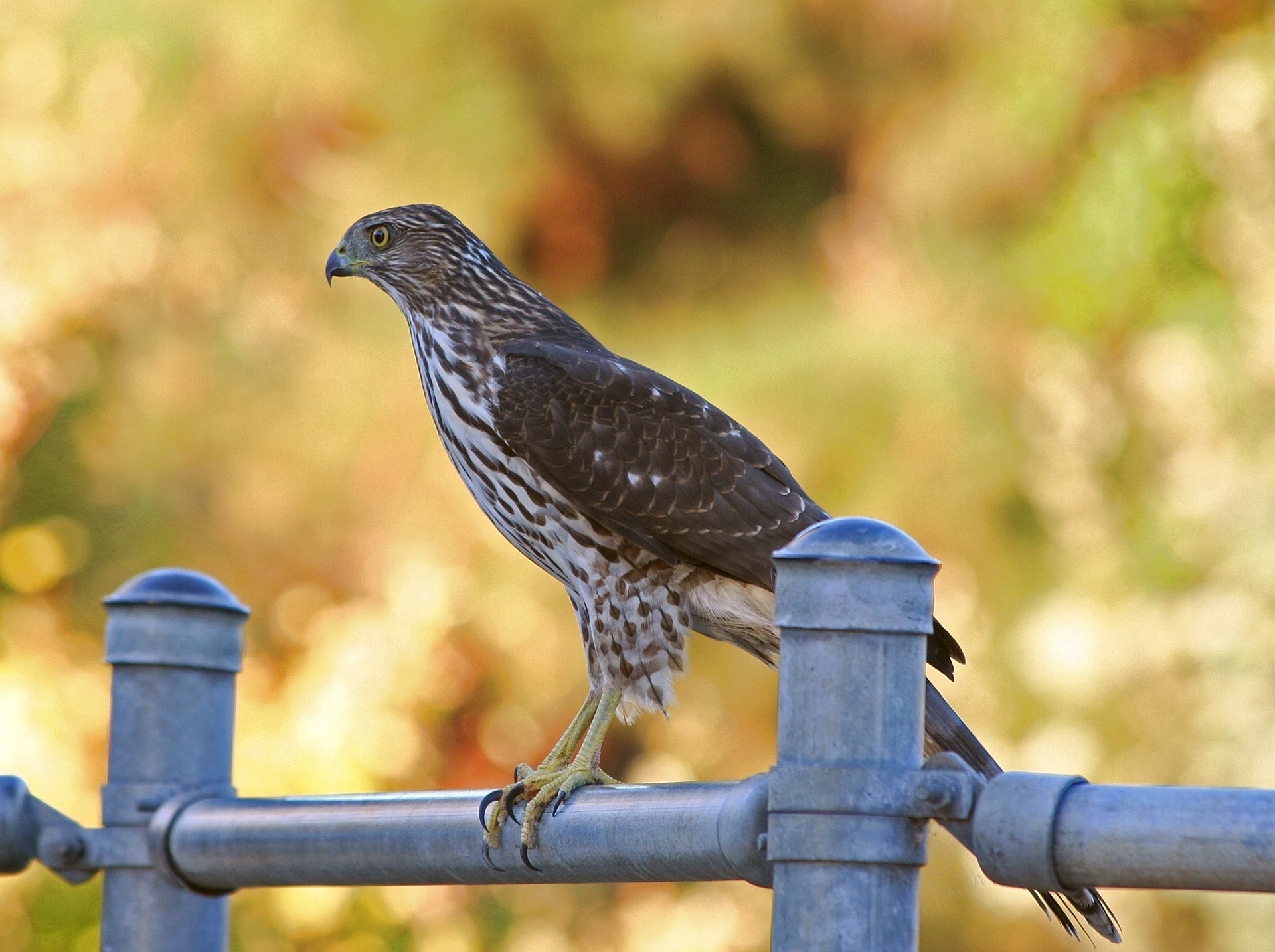
Cooper’s Hawk Behavior
They rarely flap continually when passing over open fields. They often assume a flap-flap pattern. When hunting, they fly fast and low then up and over an obstacle and surprising their prey. They also hunt by moving from perch to perch, carefully watching and taking prey by surprise.
What Cooper’s Hawk Eat
Cooper’s Hawks are known for their bold and aggressive nature as predators. The birds mostly feed on other medium-sized birds, such as American Robins, several kinds of jays, pheasants, chickens, and grouse. They also eat mammals, such as tree squirrels, chipmunks, mice, and ground squirrels. At times, Cooper’s Hawk rob nests and also eat reptiles and insects.
Cooper’s Hawks mainly feed on small mammals and birds. They can feed on medium-sized birds in the size range of flickers and robins. Cooper’s hawks also feed on bats, mice, squirrels and sometimes insects.
Where Cooper’s Hawks Live and Their Habitat
Cooper’s Hawks are found in mature forests, open woodlands, wood edges, and river groves. These birds are adaptable in all seasons to forested mountainous regions. They make themselves home in pure conifer forest, including the extreme southern part of the taiga and several parts of the west. Cooper’s Hawks prefer easy access to clearings, edges, roads, and waterways in dense forest areas. These birds are often attracted to stands of conifers due to their density; it provides more extensive shelter and a sturdier nesting site. Cooper’s Hawks are also found among trees along rivers through open country and increasingly in cities and suburbs where you can find tall trees for nest sites. You can also find these birds in winter in fairly open country, especially in the west.
Cooper’s Hawks are woodland and forest birds. They can also thrive in leafy suburbs. They nest in deciduous, coniferous and mixed wood that have tall trees and openings. They are a common sight along busy streets with tall trees and parks.
Range and Migration
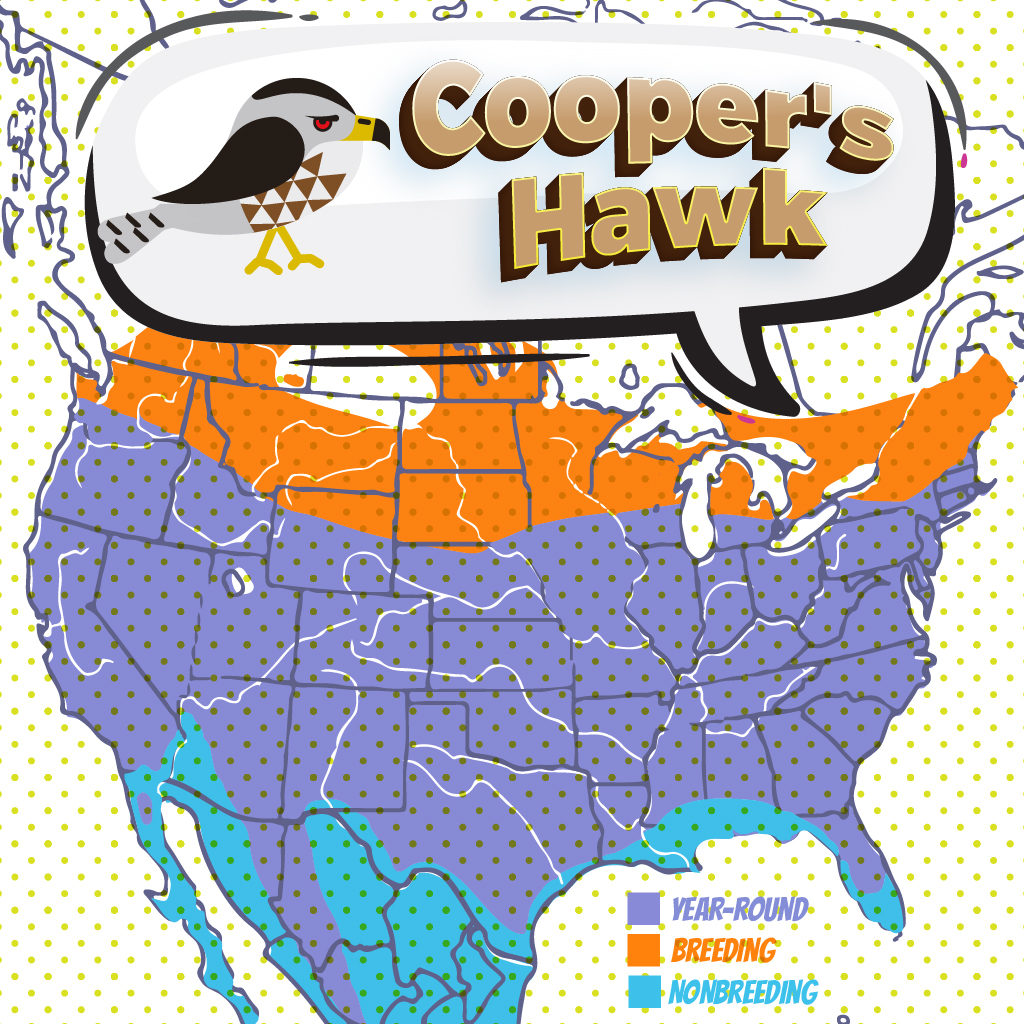
Medium-sized Cooper’s Hawks are native to the North American continent is found from Southern Canada to Mexico. These birds are short-to medium-distance migrants and can be found wintering over most of the continental United States. The birds found east of the Mississippi river tends to be larger on average than the birds to be found on the west. Cooper’s Hawks are found all year in much of range, but northernmost breeders move south for winter. The birds migrate by day, especially in fall; migrates often concentrate along ridges and coastlines in certain weather conditions. Hawk migrations occur primarily from March through May and September through mid-November.
Cooper’s Hawk Lifecycle
The females lay 3-5 eggs and incubate them for 34-36 days. The male feeds the female and can partially incubate the eggs as the female feeds. The female then broods the young for the first two weeks. After 4 weeks, the young can leave the nest. They fledge after 4-5 weeks. They can live for up to 12 years in the wild.
Nesting
Cooper’s Hawks build their nests in pines, Douglas-firs, beeches, oaks, spruces, and other tree species, often on flat ground instead of hillsides and in dense woods. The nests are built 25-50 feet high, which is often two-thirds of the way up the tree on a horizontal branch or in a crotch. With the slightest help from the female, males usually build the nest over a period of about two weeks. In pursuit of their flight, birds become powerful, agile, and quick. It allows the birds to thread their way through tree branches at a top speed. The male feeds the female for up to a month before she begins to lay eggs. Eggs might be discarded by the mother post the hatching, but those that hatch are never left in place. The females sleep on the nest until the younger ones are two-weeks old.
Ornithology
Bird Watching Academy & Camp Subscription Boxes
At Bird Watching Academy & Camp we help kids, youth, and adults get excited and involved in bird watching. We have several monthly subscription boxes that you can subscribe to. Our monthly subscription boxes help kids, youth, and adults learn about birds, bird watching, and bird conservation.
Bird Watching Binoculars for Identifying Cooper’s Hawks
The most common types of bird watching binoculars for viewing Cooper’s Hawks are 8×21 binoculars and 10×42 binoculars. Bird Watching Academy & Camp sells really nice 8×21 binoculars and 10×42 binoculars. You can view and purchase them here.
Cooper’s Hawk T-shirts
If you love the Cooper’s Hawk you should purchase a Bird Watching Academy & Camp T-shirt. To help support bird conservation we donate 10 percent to bird conservation activities.
Cooper’s Hawk Iron On Patches
Kids, Youth, and Adults love to collect our Bird Watching Academy & Camp iron on patches. Our bird watching patches help you keep track of the birds you have seen an identified. You can also display the patches on our Bird Watching Academy & Camp banners.
The Cooper’s Hawk is a great iron on patch to start your collection with. The patches are durable and can be sewn on or ironed on to just about anything.
Cooper’s Hawk Stickers
Stickers are a great way for you to display your love for bird watching and the Cooper’s Hawk. We sell a monthly subscription sticker pack. The sticker packs have 12 bird stickers. These sticker packs will help your kids learn new birds every month.
Bird Feeders For Cooper’s Hawk
There are many types of bird feeders. Here are our favorite bird feeders for your backyard. We use all of these bird feeders currently. Kids will have a great time watching birds eat at these bird feeders. Using this collection of bird feeders will provide a wide variety and many types of birds.
Best Bird Houses for Cooper’s Hawk
There are many types of bird houses. Building a bird house is always fun but can be frustrating. These 4 bird houses have become our favorites. Getting a bird house for kids to watch birds grow is always fun. We spent a little extra money on these bird houses but they have been worth the higher price and look great.





